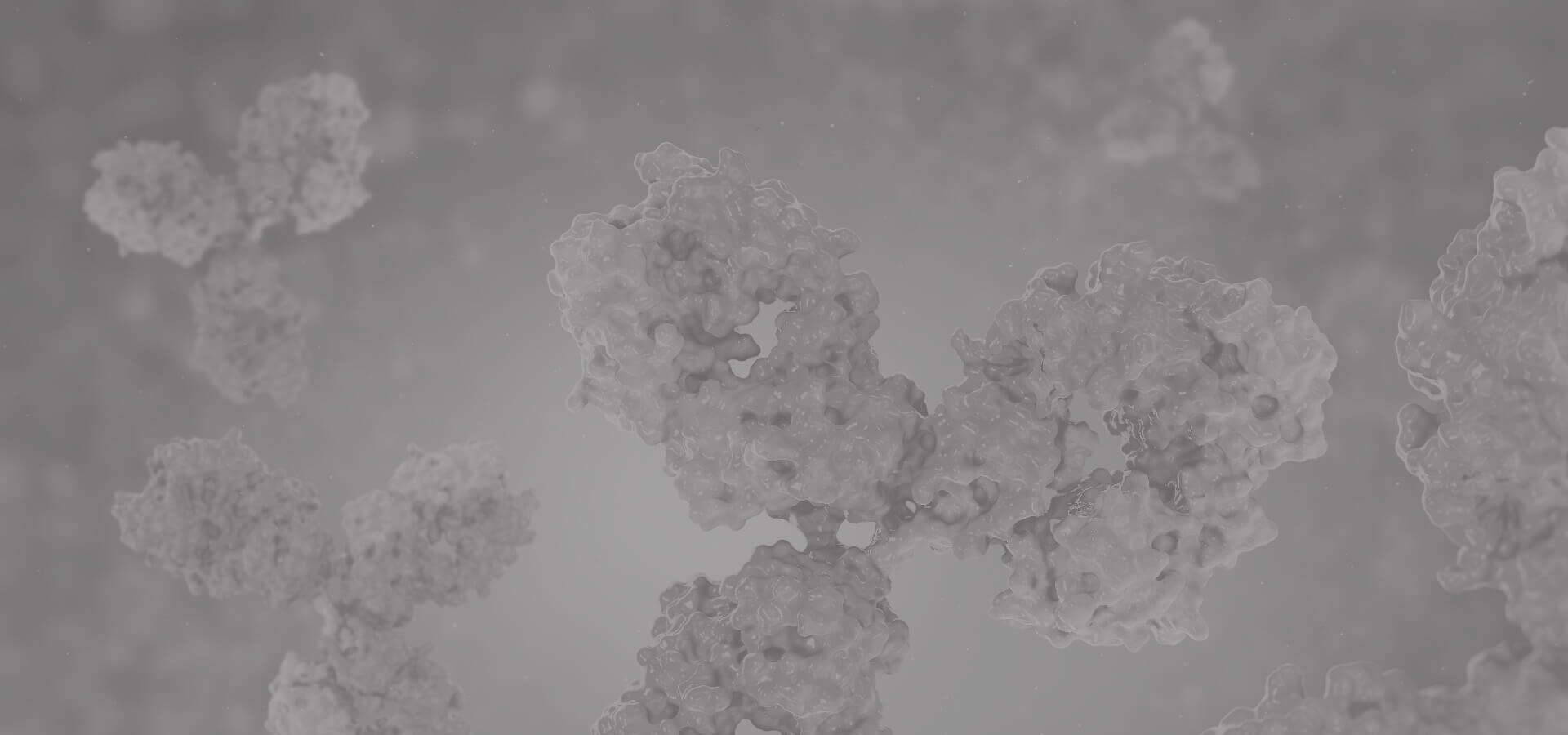CXCR4 Antibodies
Background
CXCR4 is a G protein-coupled receptor (GPCR), mainly present on the surface of immune cells, hematopoietic stem cells and various tumor cells. This receptor participates in physiological processes such as cell migration, immune regulation and homing of hematopoietic stem cells by binding to the chemokine CXCL12, and at the same time acts as a co-receptor in HIV infection to mediate the entry of the virus into host cells. CXCR4 was simultaneously identified by multiple research teams in 1996, and its three-dimensional structure was resolved through X-ray crystallography in 2010, providing an important template for the study of the GPCR family. The abnormal expression of this receptor is closely related to cancer metastasis, inflammatory diseases and immunodeficiency diseases. Its unique signal transduction mechanism and pathological effects make it an important target for tumor treatment and the development of anti-HIV drugs, which is of key significance for understanding cell signal transduction and disease mechanism research.
Structure of CXCR4
CXCR4 is a G protein-coupled receptor (GPCR) with a molecular weight of approximately 48 kDa. There are minor differences in its molecular weight among different species, mainly due to conserved variations in amino acid sequences.
| Species | Human | Mice | Rats | Rhesus monkeys |
| Molecular Weight (kDa) | 48 | 47.8 | 47.9 | 48.1 |
| Primary Structural Differences | Highly conservative 7-time transmembrane structure | Few amino acid variations in the extracellular region | With the human CXCR4 highly homologous | The structural similarity to humans is over 90% |
CXCR4 is composed of 352 amino acids and features typical GPCR structural characteristics, including 7 transmembrane α -helicles (TM1-TM7), an extracellular N-terminal domain, and an intracellular C-terminal tail. Its ligand binding pocket is located in the transmembrane region, and key residues (such as Asp171, Asp262) bind to CXCL12 (SDF-1) and trigger downstream signals. The intracellular region of the receptor contains the DRY motif (Asp-Arg-Tyr), which is responsible for G protein coupling, while the C-terminal is rich in serine/threonine and participates in receptor regulation and internalization. The secondary structure of CXCR4 is mainly an α -helix. Its three-dimensional conformation undergoes conformational changes when binding to CXCL12 or HIV gp120, affecting immune function and the mechanism of viral invasion.
 Fig. 1 Targeting CXCR4.1
Fig. 1 Targeting CXCR4.1
Key structural properties of CXCR4:
- 7-time transmembrane helical structure
- Conservative DRY motif (Asp-Arg-Tyr)
- Cysteine disulfide bond (Cys28-Cys274)
- N-terminal acidic residue cluster (Asp14/Asp15)
- C-terminal phosphorylation site (Ser324/Ser325)
Functions of CXCR4
The core function of CXCR4 is to mediate cell migration and signal transduction, and it also plays a key role in pathological processes.
| Function | Description |
| Migration of immune cells | By binding to the CXCL12 chemokine, it guides immune cells and hematopoietic stem cells to homing to specific tissues (such as bone marrow and lymph nodes) in a targeted manner. |
| HIV virus invasion | As a co-receptor of HIV-1, it cooperates with CD4 to mediate viral membrane fusion and host cell infection. |
| Cancer metastasis | Promote the passage of tumor cells through vascular endothelium and drive their metastasis to organs with high expression of CXCL12 (such as bones, lungs, and liver). |
| Hematopoietic regulation | Maintaining the localization and survival of hematopoietic stem cells in the bone marrow microenvironment affects hematopoietic regenerative capacity. |
| Regulation of inflammatory response | Regulate the recruitment of inflammatory cells such as neutrophils and monocytes, and participate in chronic inflammation and autoimmune diseases. |
Its functional diversity makes CXCR4 a key target for cancer immunotherapy, anti-HIV drugs and stem cell therapy.
Applications of CXCR4 and CXCR4 Antibody in Literature
1. Peng, Sheng-Bin, et al. "Inhibition of CXCR4 by LY2624587, a fully humanized anti-CXCR4 antibody induces apoptosis of hematologic malignancies." PloS one 11.3 (2016): e0150585. https://doi.org/10.1371/journal.pone.0150585
In this study, a humanized anti-CXCR4 monoclonal antibody LY2624587 was developed, which can efficiently block the binding of SDF-1/CXCR4 (IC50 0.26 nM), inhibit tumor cell migration (IC50 0.26-3.7 nM), and induce receptor internalization. This antibody significantly induces apoptosis, inhibits tumor growth and prolongs survival in hematological tumor models by suppressing the MAPK/AKT signaling pathway, demonstrating therapeutic potential.
2. Costa, Maria José, et al. "Optimal design, anti-tumour efficacy and tolerability of anti-CXCR4 antibody drug conjugates." Scientific Reports 9.1 (2019): 2443.https://doi.org/10.1038/s41598-019-38745-x
This study designed the first antibody-drug conjugate (ADC) targeting CXCR4. By optimizing the link-payload combination, drug-antibody ratio (DAR=4), and low-affinity antibodies, it effectively cleared cancer cells as a single agent in hematological malignancies models while reducing toxicity to normal CXCR4+ tissues (such as hematopoietic stem cells). Provide new strategies for the development of ADCs with broad-spectrum target expression.
3. Cancilla, Daniel, Michael P. Rettig, and John F. DiPersio. "Targeting CXCR4 in AML and all." Frontiers in oncology 10 (2020): 1672. https://doi.org/10.3389/fonc.2020.01672
This study indicates that CXCR4 is highly expressed in AML and ALL, interacting with CXCL12 to promote the homing of leukemia cells to the bone marrow and enhance survival, leading to a poor prognosis. Currently, small molecule inhibitors, antibodies and antibody-drug conjugates (ADCs) targeting CXCR4 are under development, aiming to block the CXCR4/CXCL12 axis, overcome microenvironment-mediated chemotherapy resistance, and provide new strategies for leukemia treatment.
4. Piloto, Ana Margarida, et al. "Plastic antibodies tailored on quantum dots for an optical detection of myoglobin down to the femtomolar range." Scientific reports 8.1 (2018): 4944. https://doi.org/10.1371/journal.pone.0004069
This study developed a novel rabbit monoclonal antibody, UMB-2, which specifically recognizes the surface receptor of CXCR4 cells. Experiments have confirmed that it can effectively detect CXCR4 in transfected cells and normal mouse tissues, and show membrane localization staining in paraffin-embedded tumor tissues, which is superior to commonly used antibodies such as 12G5, providing a reliable tool for clinical pathological assessment of CXCR4 expression.
5. Portella, Luigi, et al. "Preclinical development of a novel class of CXCR4 antagonist impairing solid tumors growth and metastases." PloS one 8.9 (2013): e74548.https://doi.org/10.1371/journal.pone.0074548
In this study, a novel cyclic peptide CXCR4 antagonist was developed based on the key amino acid motif of CXCL12. The preferred peptide R/S/I can effectively inhibit the binding of 12G5 antibody to CXCR4 (IC50 up to 10nM), significantly reduce lung metastasis of melanoma (B16-CXCR4 model) and subcutaneous growth of renal cancer (SN12C model), providing a new strategy for anti-cancer treatment.
Creative Biolabs: CXCR4 Antibodies for Research
Creative Biolabs specializes in the production of high-quality CXCR4 antibodies for research and industrial applications. Our portfolio includes monoclonal antibodies tailored for ELISA, Flow Cytometry, Western blot, immunohistochemistry, and other diagnostic methodologies.
- Custom CXCR4 Antibody Development: Tailor-made solutions to meet specific research requirements.
- Bulk Production: Large-scale antibody manufacturing for industry partners.
- Technical Support: Expert consultation for protocol optimization and troubleshooting.
- Aliquoting Services: Conveniently sized aliquots for long-term storage and consistent experimental outcomes.
For more details on our CXCR4 antibodies, custom preparations, or technical support, contact us at email.
Reference
- Cancilla, Daniel, Michael P. Rettig, and John F. DiPersio. "Targeting CXCR4 in AML and all." Frontiers in oncology 10 (2020): 1672. https://doi.org/10.3389/fonc.2020.01672
Anti-CXCR4 antibodies
 Loading...
Loading...
Hot products 
-
Mouse Anti-CASP8 Recombinant Antibody (CBYY-C0987) (CBMAB-C2424-YY)

-
Mouse Anti-ALB Recombinant Antibody (V2-180650) (CBMAB-A2186-YC)

-
Mouse Anti-CD247 Recombinant Antibody (6B10.2) (CBMAB-C1583-YY)

-
Mouse Anti-AAV-5 Recombinant Antibody (V2-503416) (CBMAB-V208-1402-FY)

-
Mouse Anti-APC Recombinant Antibody (CBYC-A661) (CBMAB-A3036-YC)

-
Mouse Anti-14-3-3 Pan Recombinant Antibody (V2-9272) (CBMAB-1181-LY)

-
Mouse Anti-ARHGDIA Recombinant Antibody (CBCNA-009) (CBMAB-R0415-CN)

-
Mouse Anti-DHFR Recombinant Antibody (D0821) (CBMAB-D0821-YC)

-
Mouse Anti-C5b-9 Recombinant Antibody (aE11) (CBMAB-AO138LY)

-
Mouse Anti-CD24 Recombinant Antibody (2Q1282) (CBMAB-C1624-CN)

-
Mouse Anti-AMIGO2 Recombinant Antibody (CBYY-C0756) (CBMAB-C2192-YY)

-
Mouse Anti-ACTB Recombinant Antibody (V2-179553) (CBMAB-A0870-YC)

-
Mouse Anti-CRTAM Recombinant Antibody (CBFYC-2235) (CBMAB-C2305-FY)

-
Mouse Anti-APP Recombinant Antibody (5C2A1) (CBMAB-A3314-YC)

-
Mouse Anti-8-oxoguanine Recombinant Antibody (V2-7719) (CBMAB-1898CQ)

-
Mouse Anti-BMI1 Recombinant Antibody (CBYC-P026) (CBMAB-P0108-YC)

-
Mouse Anti-EPO Recombinant Antibody (CBFYR0196) (CBMAB-R0196-FY)

-
Mouse Anti-4-Hydroxynonenal Recombinant Antibody (V2-502280) (CBMAB-C1055-CN)

-
Mouse Anti-CASP7 Recombinant Antibody (10-01-62) (CBMAB-C2005-LY)

-
Mouse Anti-ALB Recombinant Antibody (V2-363290) (CBMAB-S0173-CQ)

- AActivation
- AGAgonist
- APApoptosis
- BBlocking
- BABioassay
- BIBioimaging
- CImmunohistochemistry-Frozen Sections
- CIChromatin Immunoprecipitation
- CTCytotoxicity
- CSCostimulation
- DDepletion
- DBDot Blot
- EELISA
- ECELISA(Cap)
- EDELISA(Det)
- ESELISpot
- EMElectron Microscopy
- FFlow Cytometry
- FNFunction Assay
- GSGel Supershift
- IInhibition
- IAEnzyme Immunoassay
- ICImmunocytochemistry
- IDImmunodiffusion
- IEImmunoelectrophoresis
- IFImmunofluorescence
- IGImmunochromatography
- IHImmunohistochemistry
- IMImmunomicroscopy
- IOImmunoassay
- IPImmunoprecipitation
- ISIntracellular Staining for Flow Cytometry
- LALuminex Assay
- LFLateral Flow Immunoassay
- MMicroarray
- MCMass Cytometry/CyTOF
- MDMeDIP
- MSElectrophoretic Mobility Shift Assay
- NNeutralization
- PImmunohistologyp-Paraffin Sections
- PAPeptide Array
- PEPeptide ELISA
- PLProximity Ligation Assay
- RRadioimmunoassay
- SStimulation
- SESandwich ELISA
- SHIn situ hybridization
- TCTissue Culture
- WBWestern Blot








